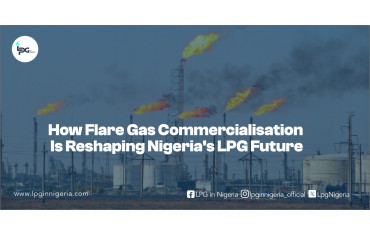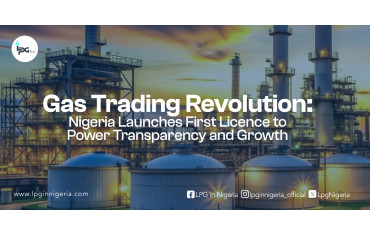- 2951
- 5
Sharing Ideas and Updates on LPG in Nigeria and related information to enable effective collaboration within the LPG Value Chain
Enhancing LPG Safety, Maintenance, And Longevity: A Guide For LPG Sellers And Suppliers

Liquefied Petroleum Gas (LPG) is a popular choice for cooking, heating, and various industrial applications due to its efficiency, reliability, and clean-burning properties. For LPG sellers and suppliers, educating customers on safety, maintenance, and optimal usage is crucial. This blog explores practical strategies to help you guide your customers in ensuring the safe and prolonged use of LPG.
Understanding LPG Safety
Safety is paramount when it comes to LPG. Here’s how you can educate your customers on this vital aspect:
1. Proper Handling and Storage:
Educate on Cylinder Placement: Advise customers to store LPG cylinders in a cool, well-ventilated area, away from direct sunlight and flammable materials. Ensure they are upright and secured to prevent tipping.
Safety Checks: Encourage regular inspections for leaks and damage. Customers should check the cylinder, regulator, and hose connections for any signs of wear or damage.
2. Leak Detection and Emergency Procedures:
Teach Leak Detection: Show customers how to perform simple leak tests using soapy water. Explain that bubbles indicate a gas leak and they should immediately turn off the gas supply and contact a professional.
Emergency Plan: Provide a clear emergency action plan, including how to shut off the gas supply, evacuation procedures, and the importance of having a fire extinguisher rated for LPG fires.
3. Safety Devices and Features:
Promote Safety Features: Highlight appliances equipped with safety devices such as flame failure devices, automatic shut-off valves, and gas detectors. Explain how these features enhance safety.
Promoting Regular Maintenance
Regular maintenance is essential for the safe and efficient use of LPG. Here’s how you can guide your customers:
1. Routine Inspections:
Scheduled Checks: Encourage customers to have their LPG appliances and cylinders inspected annually by a certified technician. Regular maintenance helps detect potential issues before they become hazardous.
Cleaning Tips: Advice on cleaning appliances regularly to prevent blockages in burners and ensure optimal performance. Remind them to keep the area around appliances clean and free of combustible materials.
2. Hose and Regulator Maintenance:
Check for Wear: Explain the importance of inspecting hoses and regulators for cracks, leaks, or signs of wear. Replace them every 5 years or sooner if damaged.
Proper Installation: Stress the need for professional installation and regular checks to ensure all connections are secure and free from leaks.
Maximizing LPG Usage Efficiency
Educating customers on how to get the most out of their LPG can enhance their experience and reduce costs. Here’s how:
Choosing the Right Appliances:
Energy-Efficient Models: Recommend appliances with high energy efficiency ratings. Explain how modern, efficient appliances use less gas and provide better performance.
Matching Capacity: Help customers choose appliances that match their cooking needs. Overpowered appliances can waste gas, while underpowered ones may not perform efficiently.
Optimizing Usage Practices:
Smart Cooking Tips: Educate on using lids while cooking to retain heat, cooking in batches to save time and gas, and turning off burners a few minutes before finishing to utilize residual heat.
Temperature Control: Advise on adjusting flame levels to suit different cooking tasks. High flames are for boiling, while medium and low flames are ideal for simmering and slow cooking.
Cylinder Management:
Regular Refill Schedule: Encourage customers to keep track of their LPG usage and schedule refills before running low. This prevents unexpected interruptions.
Cylinder Exchange Programs: Promote cylinder exchange programs to ensure customers always have a full cylinder, reducing downtime and ensuring a continuous gas supply.
As an LPG seller or supplier, your role in educating customers on safety, maintenance, and efficient usage is vital. By providing clear guidance, practical tips, and promoting safety features, you help ensure that LPG is used safely and effectively. This not only enhances customer satisfaction but also contributes to a safer and more sustainable environment.
Remember, a well-informed customer is a safer customer. Keep the lines of communication open, offer regular training sessions, and stay updated with the latest safety standards and technologies. Together, we can make LPG use safer, more efficient, and enjoyable for everyone.
Make sure to Visit our Forum and Marketplace.
5 Comments.
-
-

Oluwabukola Jimoh
31 July 2024 - 07:27amThank You and Make Sure to Let Us Know How we can Improve.
Reply
-
-
Okoye Kingsley
30 July 2024 - 12:33pmWe wish tompuurchsse a skid gas tank of capacity1.5-2.5 tons. Quotes from manufacturers are highly welcoi
Reply-

Oluwabukola Jimoh
31 July 2024 - 07:28amKindly visit our marketplace, we have numerous sellers on there, ready to sell.
Reply
-















James Asu
30 July 2024 - 03:16pmBeautiful submissions. Thanks for the enlightenment. It is detailed and straightforward.
Reply